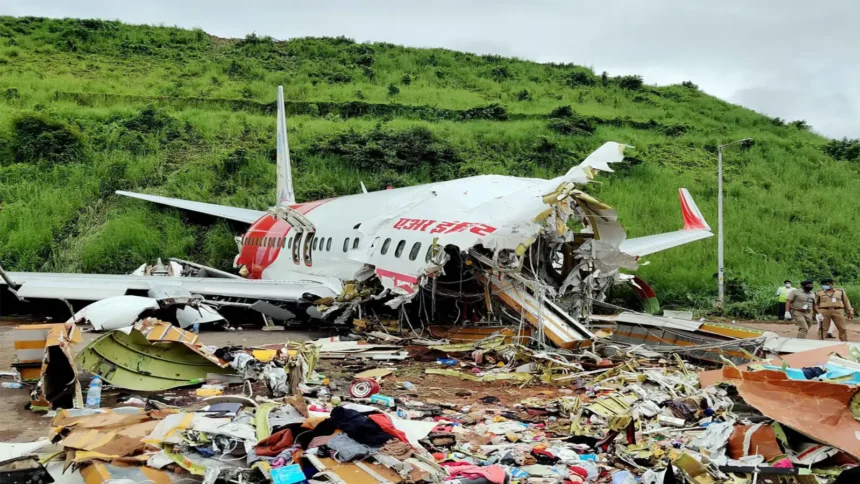Introduction
India’s skies have witnessed some devastating air disasters—some of which led to sweeping safety and procedural reforms India air crash. From mid-air collisions to runway overshoots and configuration failures, this post chronicles the 10 most shocking air crashes in India’s aviation history, offering insights into causes, casualties, and safety takeaways.
1. Charkhi Dadri Collision (1996)

The deadliest mid-air collision globally: Saudia Flight 763 and Kazakhstan Airlines Flight 1907 collided near Delhi, killing all 349 onboard. This disaster led to India mandating TCAS systems (Traffic Collision Avoidance Systems) on all commercial aircraft.
2. Air India Flight 182 “Kanishka” Bombing (1985)
A terrorist bombing caused the plane to explode mid-air over the Atlantic, killing 329 people. This was one of the deadliest aviation terror attacks in history. More details available on AP News.
3. Air India Flight 855 (1978)
The aircraft plunged into the Arabian Sea minutes after takeoff from Mumbai. All 213 passengers perished due to pilot disorientation caused by instrument failure.
4. Air India Flight 101 (1966)
Crashed into Mont Blanc while approaching Geneva. All 117 onboard died, including India’s top nuclear scientist Homi Bhabha. Investigative reports can be found on Times of India.
5. Indian Airlines Flight 113 (1988)

The Boeing 737 crashed near Ahmedabad during landing due to poor visibility and pilot error. 133 people were killed.
6. Indian Airlines Flight 605 (1990)
While approaching Bangalore airport, the aircraft crashed into a golf course due to confusion over autopilot disengagement. 92 fatalities were recorded.
7. Indian Airlines Flight 257 (1991)
The flight crashed in the hills of Manipur due to poor weather and lack of ground radar systems, killing all 69 on board.
8. Indian Airlines Flight 491 (1993)
During takeoff from Aurangabad, the aircraft hit a truck on the runway, leading to 55 deaths. Airport safety protocols were significantly revised after this.
9. Alliance Air Flight 7412 (2000)
This aircraft crashed in a residential area of Patna due to engine failure and pilot mishandling, resulting in over 50 fatalities.
10. Air India Express Flight 812 (2010)
The Boeing 737 overshot the Mangalore runway and plunged into a gorge, killing 158. It highlighted the risks of tabletop runways and was widely reported by Reuters.
🆕 Bonus: Air India Express Flight 1344 (2020)

The Kozhikode crash occurred during heavy rainfall, as the aircraft overshot the tabletop runway. It led to renewed scrutiny of landing protocols at such airports.
Conclusion: What India Learned from These Tragedies
- Tech Upgrades: Mandatory TCAS post-Charkhi Dadri collision
- Runway Awareness: Emphasis on stabilized approaches at tabletop airports
- ATC Modernization: More ILS systems installed at smaller airports
- Pilot Training: Enhanced simulation training for tricky weather/terrain
These catastrophic events—including the recent Ahmedabad Air India crash—underscore the importance of stringent aviation safety protocols. While India has made remarkable strides in aviation safety, these crashes remain tragic reminders of the cost of failure.
Related: How Takeoff Failures Lead to Catastrophe – Full Graphic Breakdown









